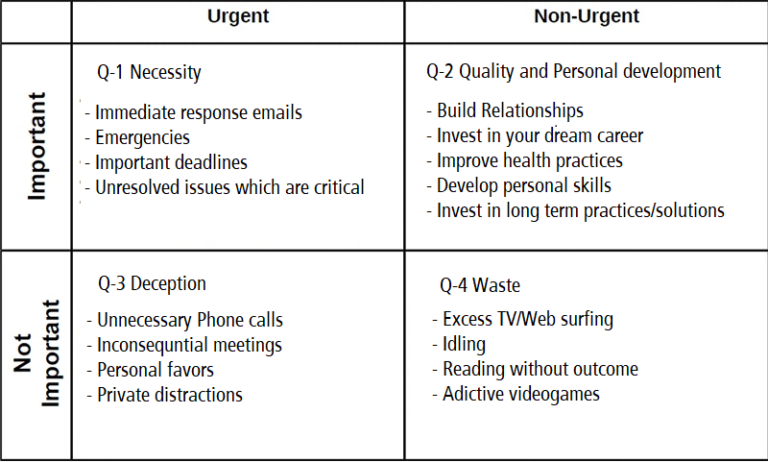

On my sheet, you can see to the right of each task you can grade high or low what is of importance to you. It gets you thinking in ways to really focus on what matters.
COVEY PRIORITY MATRIX FREE
As much as I would be tempted to ‘outsource’ my trips to the gym, it’s impossible! But I could free up time to get to the gym, which is why this matrix is so powerful. This works for some things better than others. But do you have the time, inclination, and expertise to do this? Maybe, or maybe not? It is also a basis for key processes, like VAT or company accounts. Good bookkeeping means you know where you stand financially, who owes you money and what you have spent. It is important because it ensures your records are correct. This is (and I would say this of course, but with good reason!) a high importance activity, albeit not immediately urgent. If you would rather someone else handle this on your behalf, could you outsource it, or bring someone else into the business to handle it for you?īringing it more into finance, what about bookkeeping. If being the first voice a customer or prospect hears means a lot to you, this might be high for you. Could a virtual assistant or telephone service assist? This to me comes down to inclination, or your appetite to want to spend time working on something. You don’t have the time to focus on high value activities, because of the urgency created by your phone ringing all the time. Say for example, telephone calls are bombarding you every day. I am barely scratching the surface and I highly recommend this as a read. I must say, The 7 Habits Of Highly Effective People is a fantastic book for many reasons and even this topic alone is covered in greater depth. Spending more time on activities in the top-right quadrant can help you reduce urgent items, improve your quality outputs and should in theory help you achieve more personally and professionally. But time is limited by those urgent items which take up your time. The things which will grow you personally and professionally. If you were to think about things you need to do, chances are the top-right quadrant has the most valuable tasks in it. Catching up on your box sets, clearing junk emails away or other things like this which don’t really add value. Not every email or call you will receive is important.įinally, the bottom right covers those things which are not important, nor urgent.

The danger is the urgency creates the illusion of importance. The bottom left covers those things which are not important but urgent are the distractions, such as emails, phone calls or notifications. The bottom row covers non-important items. It could be going to the gym, building your budget, or networking. Not urgent, but important things in the top-right quadrant are valuable, but not necessarily the urgent priority. They take the priority and are the most pressing issues you must deal with. Items in the top-left quadrant are the things you must do ASAP, such as completing your taxes.
COVEY PRIORITY MATRIX DOWNLOAD
This creates four quadrants, below.Ĭlick on the table or here to download your own version, with our little twist. On the left, you have “Important” and “Not Important”. On the top, you have “Urgent” and “Not Urgent”. Stephen was able to categorise these tasks into two categories: urgency and importance. Everything from the big deadlines, dedicating time to a new system, answering phone calls, watching the film you’ve wanted to see or even writing blogs! The Time Management Matrix is a way of classifying the tasks and errands that come into our daily life. I’ll try to cover this book a little more later, but for now I want to introduce his Time Management Matrix. In his book, The 7 Habits Of Highly Effective People, Stephen talks about what he witnessed in superstar individuals and businesses in how they think, act and manage their time. The one significant thing which has helped me is to manage my tasks in what is known as a Time Management Matrix, devised by the excellent Stephen R Covey. Even now, I am writing this on a Sunday afternoon, so I can work flexibly around my free time, my family time, and my delivery time. It is as much an art as a science for me. Planning and managing your time around these pressures is tough. There is a growing pressure to try and reverse the ‘always on’ culture, but it’s practically difficult. Constant notifications, email bombardment and being online 24/7 means you can easily become distracted. The modern working world is a very intense place. Bit odd for a blog on an accountant’s site? Read on to see why I’m passionate about this. I want to talk about time and time management.


 0 kommentar(er)
0 kommentar(er)
